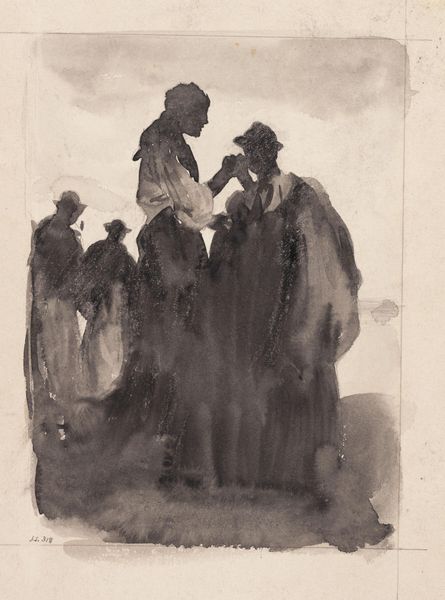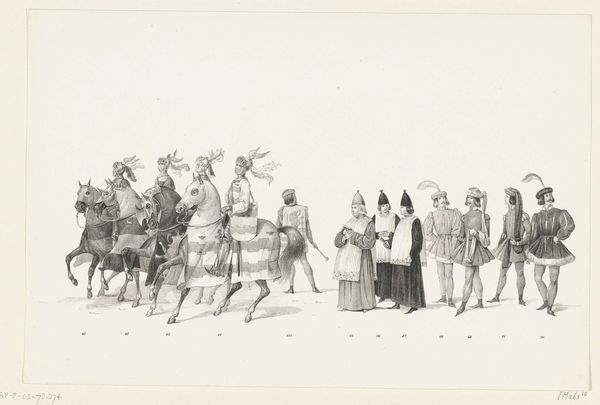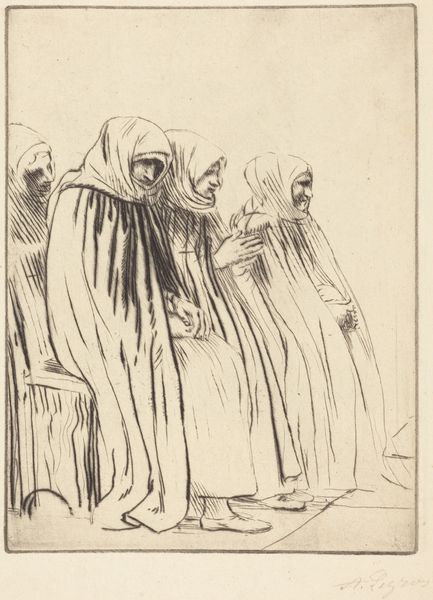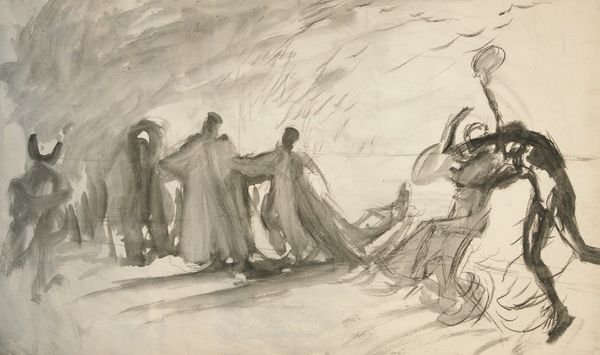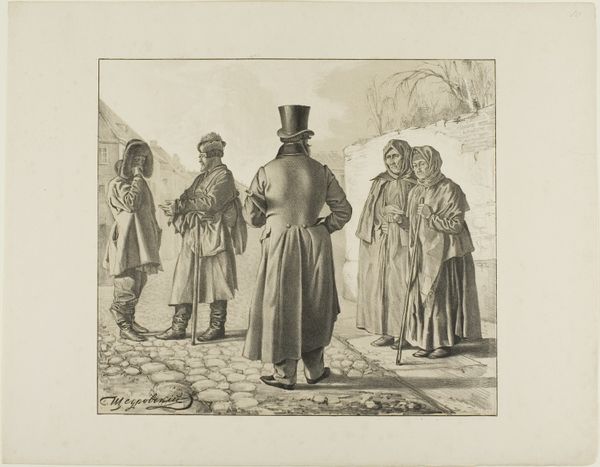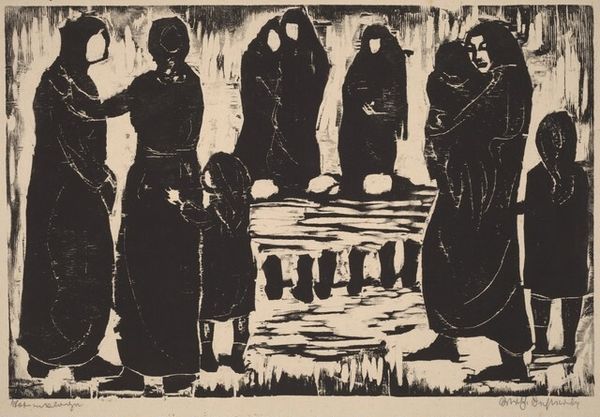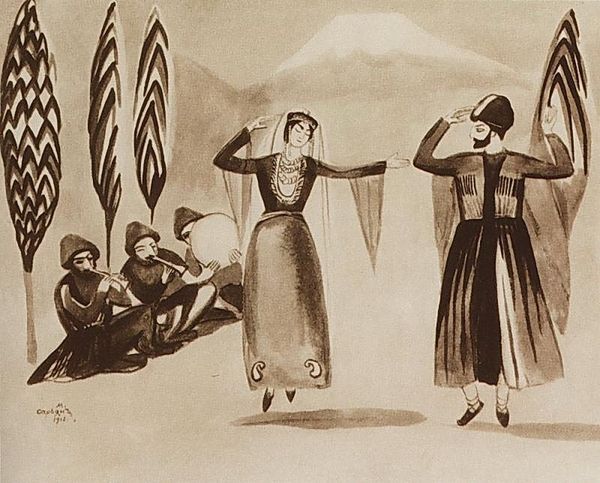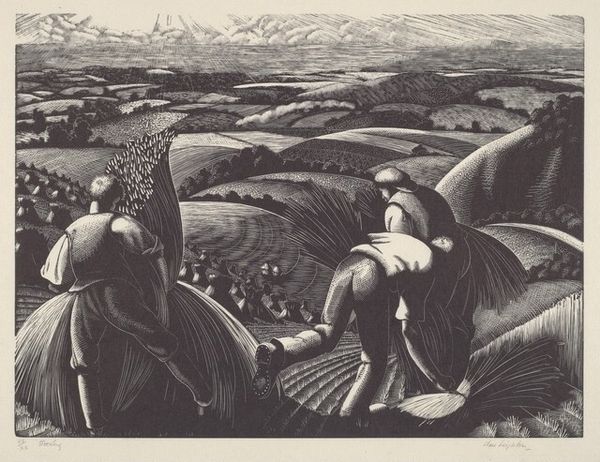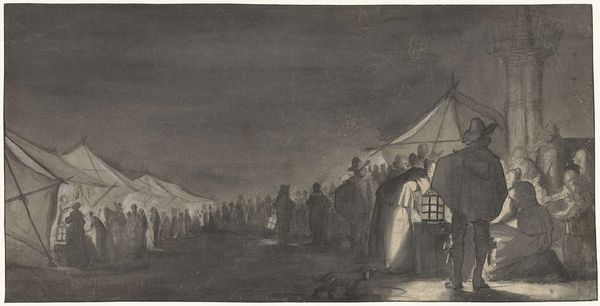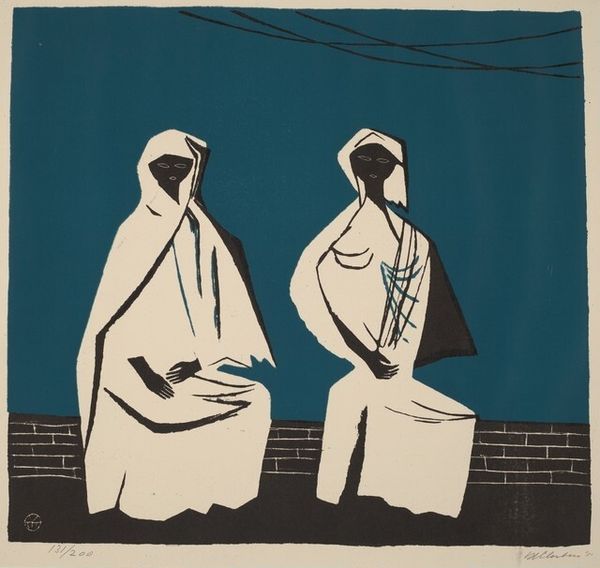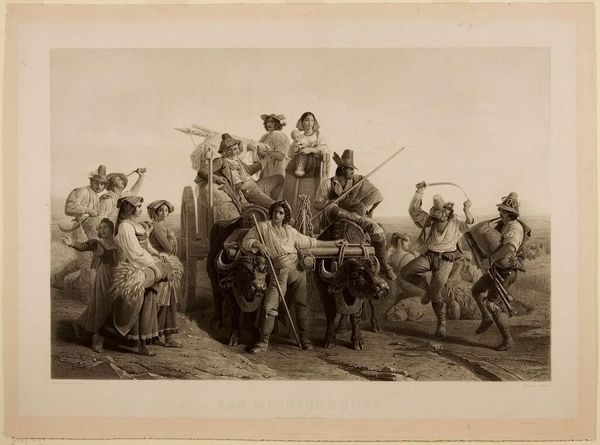
#
pencil sketch
#
sculpture
#
charcoal drawing
#
charcoal art
#
unrealistic statue
#
old-timey
#
19th century
#
charcoal
#
graphite
#
statue
Dimensions: image/sheet: 24.77 × 36.83 cm (9 3/4 × 14 1/2 in.)
Copyright: National Gallery of Art: CC0 1.0
Curator: Cartier-Bresson's "Srinagar, Kashmir, India," likely captured between 1948 and 1961, immediately strikes one as quite stark. What’s your initial impression? Editor: There's a sense of haunting stillness. The figures, shrouded and overlooking the landscape, create a feeling of both enclosure and exposure. It makes me consider questions around agency and representation. Curator: Indeed. It's crucial to consider this work through the lens of post-colonial representation and the complexities of cultural encounter. How does the artist, a Western photographer, frame the Kashmiri women, and what narrative does that framing create or perpetuate? The composition, isolating them against a panoramic landscape, might romanticize them as picturesque figures, overlooking questions of self-determination or lack thereof. Editor: I agree, the landscape itself is a loaded visual signifier here. The majestic mountains contrast sharply with the covered figures in the foreground, potentially reinforcing orientalist notions of the "exotic East." What role do you think the clothing plays in dictating our reception of the piece? Curator: Absolutely. The clothing acts as both a cultural marker and a visual barrier, highlighting themes of visibility, gender, and perhaps religious or cultural constraint. How might these images, taken during a pivotal moment of Indian independence and partition, feed into the politics of imagery surrounding nationhood and identity? The historical period must color our view, especially when exhibited to contemporary audiences. Editor: Precisely. It makes you think about the ethics of image-making. It feels less about capturing a spontaneous moment, a Cartier-Bresson trademark, and more about staging a constructed reality that fits a preconceived narrative. Ultimately it prompts a larger discussion on photographic subjectivity and responsibility, especially in relation to marginalized communities. Curator: That responsibility extends, of course, to the spaces exhibiting the artwork as well. Museums have a critical part to play in the framing and discussion surrounding potentially controversial pieces like these. It's about acknowledging the power dynamics at play. Editor: Well said. This image is undeniably beautiful and captivating. Still, that doesn't negate the complex conversations it invites about representation, power, and the ever-evolving relationship between observer and subject.
Comments
No comments
Be the first to comment and join the conversation on the ultimate creative platform.
